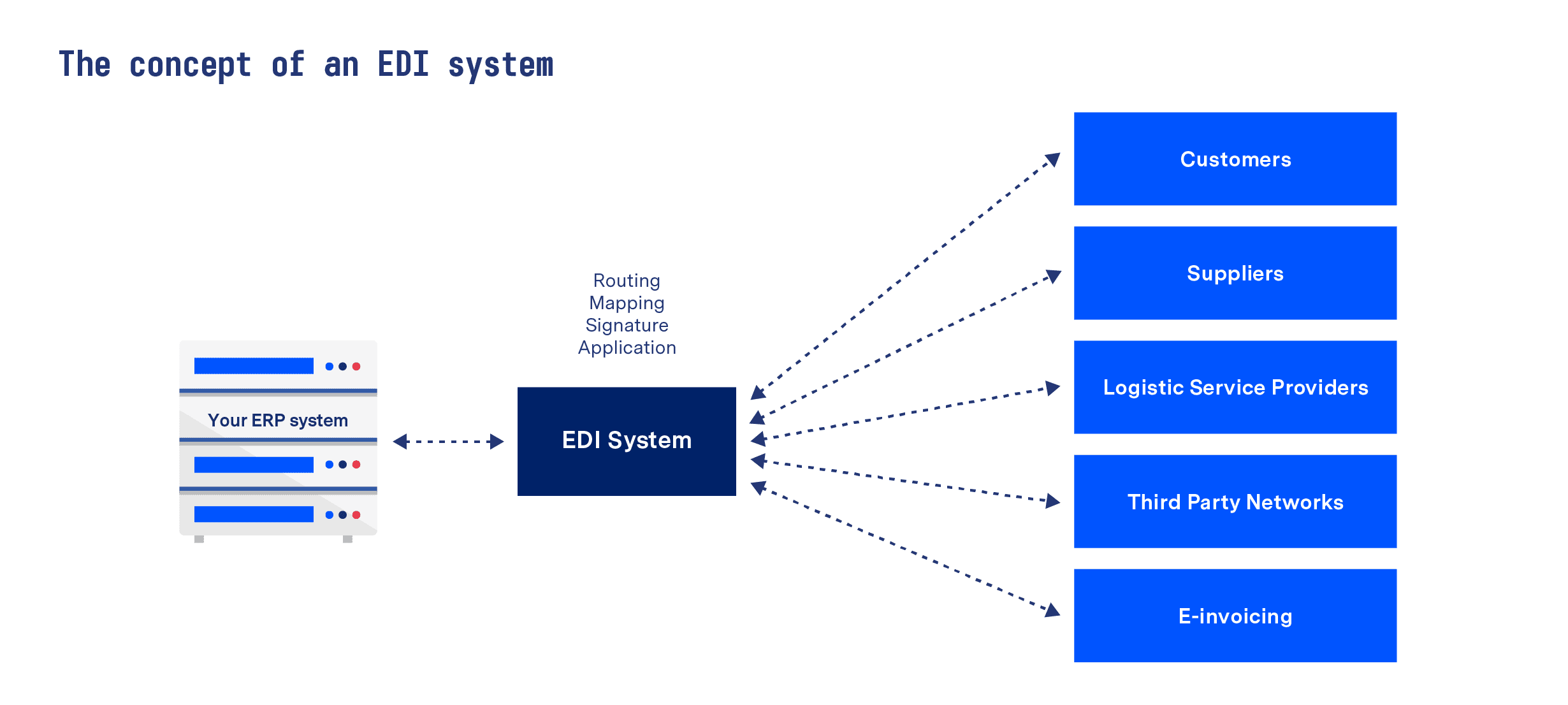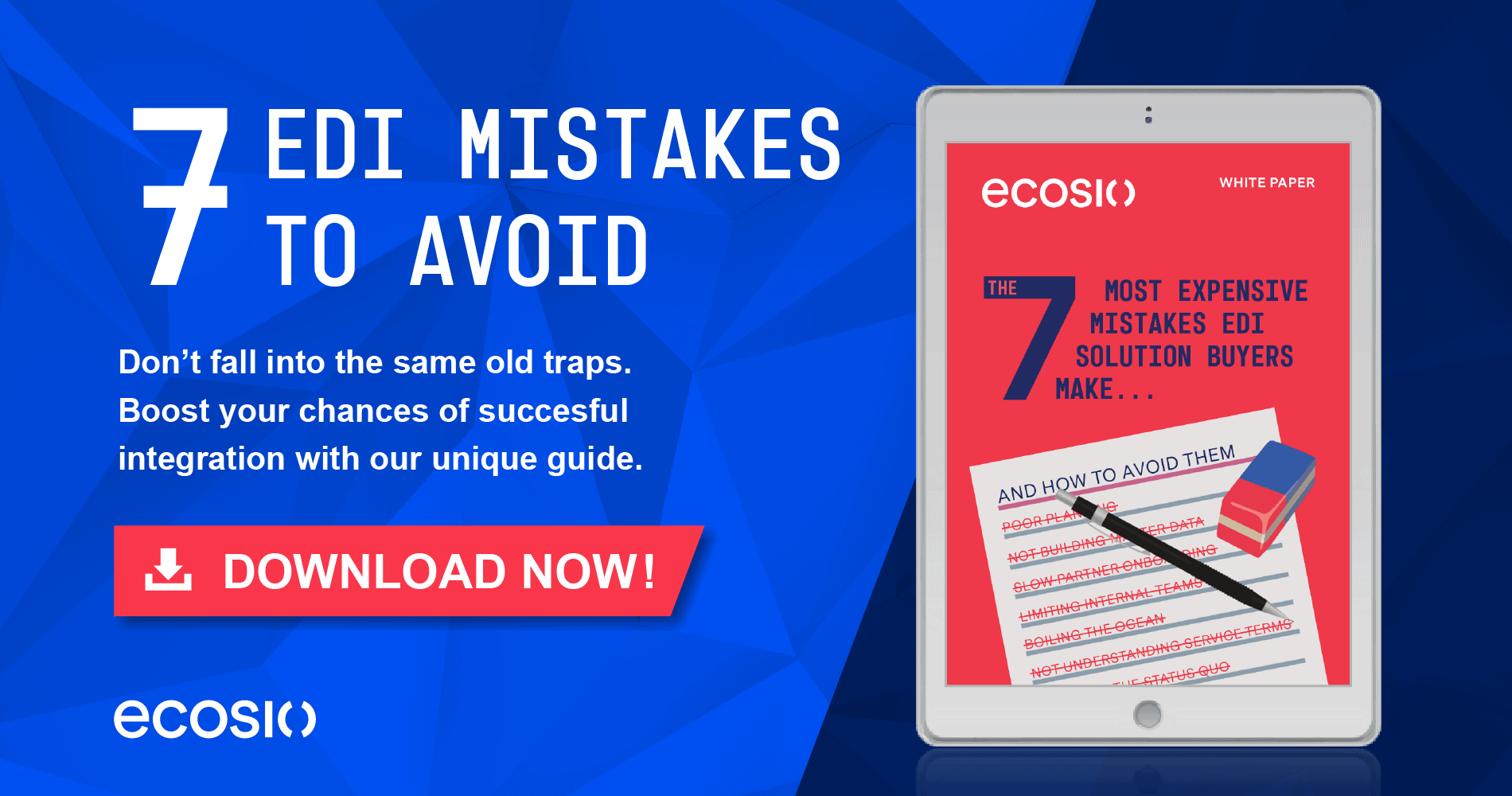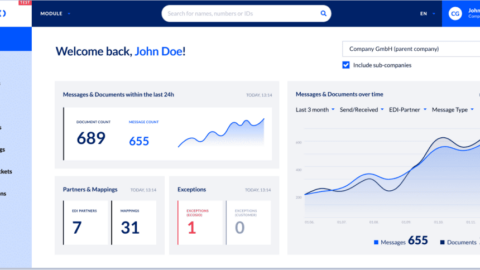Electronic data interchange – or EDI for short – is becoming increasingly central to modern business processes as more and more businesses seek to safeguard against risk and improve the efficiency of B2B communication. In this article we’ll look at what an EDI system is, why they are more necessary than ever, what makes an efficient system and how difficult migrating to a new system really is.
What is an EDI system?
An EDI system is the means by which a business exchanges electronic documents (such as orders, invoices and delivery notes) with its customers and suppliers automatically. While EDI systems can take several different forms, they can be broadly grouped into three main categories:
- On-premise (AKA local EDI converter) systems
- Platform as a service (AKA “managed”) systems
- EDI as a Service (AKA “fully managed”) solutions
As we break down in our infographic comparing these solutions, they differ significantly in terms of how much internal work is required to operate them. However, regardless of who does the work, all do largely the same job – allowing you to trade key documents with business partners quickly, easily and accurately (as minimal human intervention is required).
Why EDI systems are increasingly central to business operations
Businesses have never been so dependent on one another as they are today. Because of this, as recent supply chain issues have shown, things can easily snowball when problems arise. As a result, it’s no surprise that more and more companies are taking steps to safeguard the sustainability of their supply chains by optimising automated B2B communication processes.
While EDI has long been essential for retail and automotive supply chains, going without EDI is simply not an option for any industry today. One reason for this is the benefits automated data exchange can offer – allowing businesses to react quickly (usually in real time) and ensure message exchange remains error-free. Another key reason is the fact that it is now demanded by an ever-growing number of businesses, with large businesses in particular keen to eliminate manual processes in exchanges with smaller suppliers in order to enjoy automated connections to all partners. Likewise, governments across the world are introducing mandatory e-invoicing for both B2G and B2B exchanges – meaning businesses have no choice but to implement a solution.
What makes an efficient EDI system?
To be successful, an EDI system must…
- …Be able to cover all of your needs. Which formats do you need to be able to map to? Is onboarding partners fast a priority? Is it important that your EDI data is protected in the event of system failure? While questions like these may seem obvious, many businesses fail to conduct an appropriate assessment of what their existing EDI needs are, which often results in a sub-optimal solution.
- …Fit your internal resources/expertise. There is no such thing as a one-size-fits-all EDI solution, so it’s important to select one that aligns with your internal capabilities and resources. For example, if you have substantial EDI expertise and personnel in-house, local EDI converter software may be an option for mapping setup, while message transmission may be outsourced to an expert provider. Alternatively, if you don’t have internal EDI expertise and want other departments to have the ability to access EDI data, an EDI as a Service solution makes more sense.
- …Streamline crucial processes. Obviously all EDI streamlines message exchange to some extent, but some EDI systems go further than others. For example, with an EDI as a Service solution all partner onboarding (from first contact right through to go-live) is handled by external EDI experts – reducing internal effort to next to nothing. Plus such solutions also help to optimise internal processes, as specialist departments are able to search for and access EDI data directly.
- …Be flexible. EDI requirements change over time, and it’s important that your EDI system is able to adapt if it is to continue to offer maximum value. With this in mind it’s best to steer clear of any EDI contracts that include steep “price cliffs” for changes in message volume or additional capabilities.
- …Work for you! Running an EDI system shouldn’t feel like a headache. A good EDI system should be something that works for you in the background, helping you to reduce risk, lower costs, save time and generally streamline connections in a futureproof way.
How difficult is migrating to a new EDI system?
Not difficult at all… if you pick a system that meets your needs and resources that is.
Unfortunately, fear of changing a running system is one of the main reasons that businesses persist with outdated and inefficient EDI systems. However, ignoring a problem will never make it go away, and putting off a necessary migration project will only further damage your chances to gain a competitive advantage over others in your industry and delay your ability to enjoy the benefits good EDI can deliver.
While some businesses do make expensive mistakes when it comes to EDI, for those who plan their migration project properly and select the right EDI solution, migration can be a breeze. In particular, if you opt for an EDI as a Service solution (such as that offered by ecosio), everything from initial technical setup to ongoing operation is handled by your EDI provider – including partner onboardings, message monitoring and proactive error resolution. When switching to such an EDI system there is no need to worry about the migration disrupting ongoing operations, as all connections undergo rigorous testing and parallel operation before being put live.
Things to remember when selecting an EDI system
1) Preparation is key
As with any major project, planning = success. The more thorough you are when assessing your current capacity and requirements, the better placed you will be to select the right solution.
For more advice on planning your EDI project, see our dedicated blog article here.
2) Assess your internal resources
Although one of the main benefits of EDI is the fact that it streamlines previously time-consuming manual tasks, implementing and maintaining an EDI solution still requires effort. With this in mind it is important to consider both what your internal team can realistically handle and whether or not certain tasks would be better left to your provider.
Unfortunately many businesses overestimate internal capability and end up struggling to operate the solution or having to invest in additional personnel.
3) Think ahead
As we mentioned earlier, requirements can change quickly in EDI. Significantly, too, with governments across the world introducing e-invoicing regulations, and businesses demanding more and more data from their partners, changes may be outside your control.
By factoring in potential future needs (such as a Web EDI portal or routing via new protocols/VANs) when selecting an EDI system, you will avoid the possibility of being stuck with an ill-fitting, inflexible solution a few years down the line.
Could an EDI as a Service solution benefit your business?
At ecosio we have helped hundreds of businesses to revolutionise their B2B integration processes and experience the true potential of efficient EDI.
Our EDI as a Service solution takes all the hassle out of EDI, leaving you free to concentrate on what your business does best. From initial technical setup, partner onboarding, testing and go-live, to ongoing message monitoring and error handling, we manage everything so you don’t have to.
To find out more about our unique solution, click here. Alternatively, feel free to get in touch – we are always happy to help!















